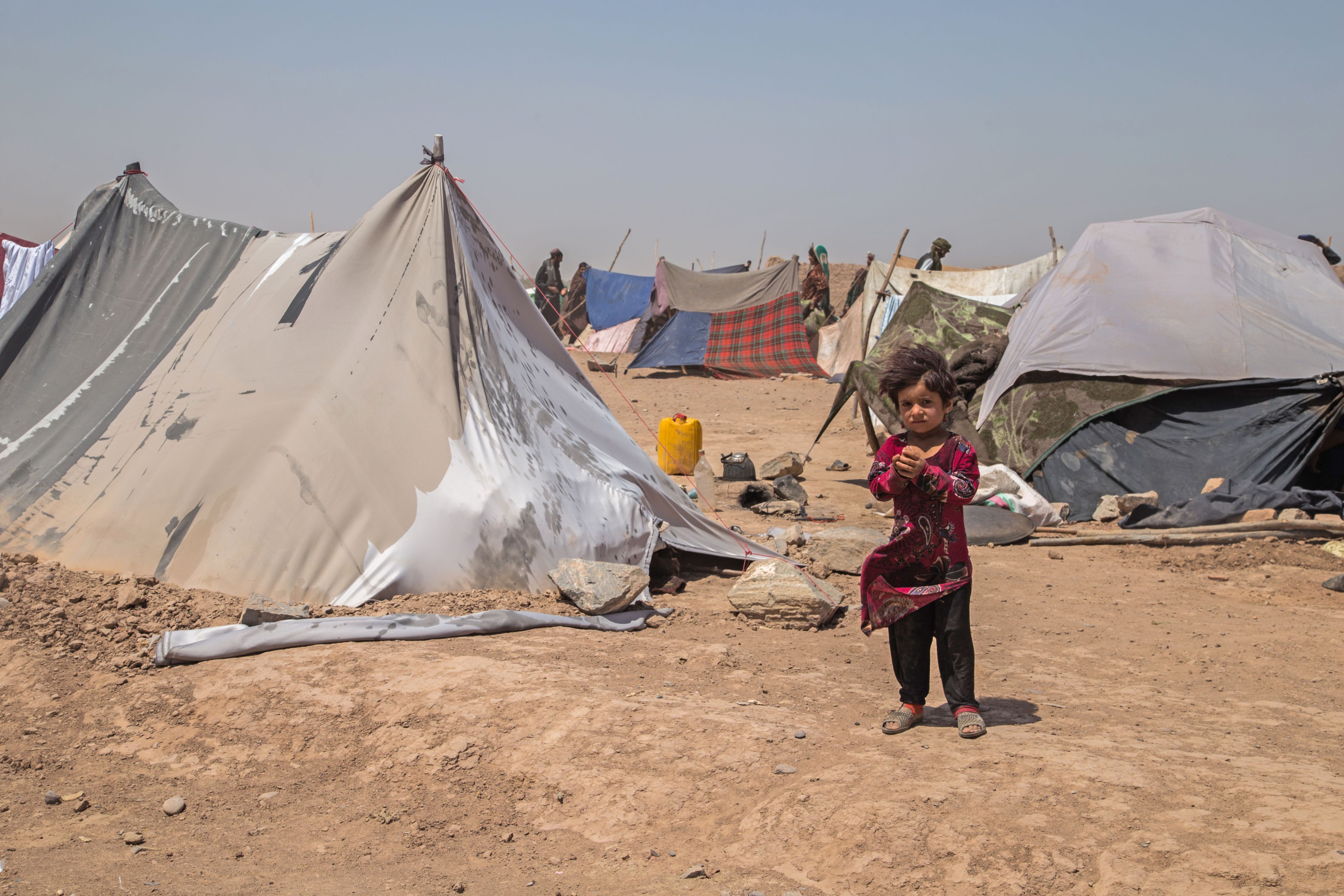
Herat, Afghanistan
Since 2005, nearly 33,000 children in Afghanistan have been killed or injured because of conflict. And now children are facing deadly hunger, made worse by natural disasters and the impact of COVID-19. In Herat, tens of thousands of people are living in camps after being forced to flee their homes.
Where is Jamila?
3.5 million people in Afghanistan have been forced out of their homes by conflict and climate change. They have nowhere to turn.
Three-year-old Jamila* lives in Afghanistan, on the outskirts of Herat City. Thousands of people are sheltering here. All of them desperate. All of them looking for a way to survive.
It’s a dangerous place for children.
Jamila’s family set up camp here before she was born.
Her home for now is a one-room mud hut that her father built, just big enough for their family of seven to squeeze into. It’s freezing cold in the winter and stifling hot in the summer. It’s always dark.
Jamila was born here. Right here, on the dirt floor. It’s the only home she has ever known.
*Names changed for protection
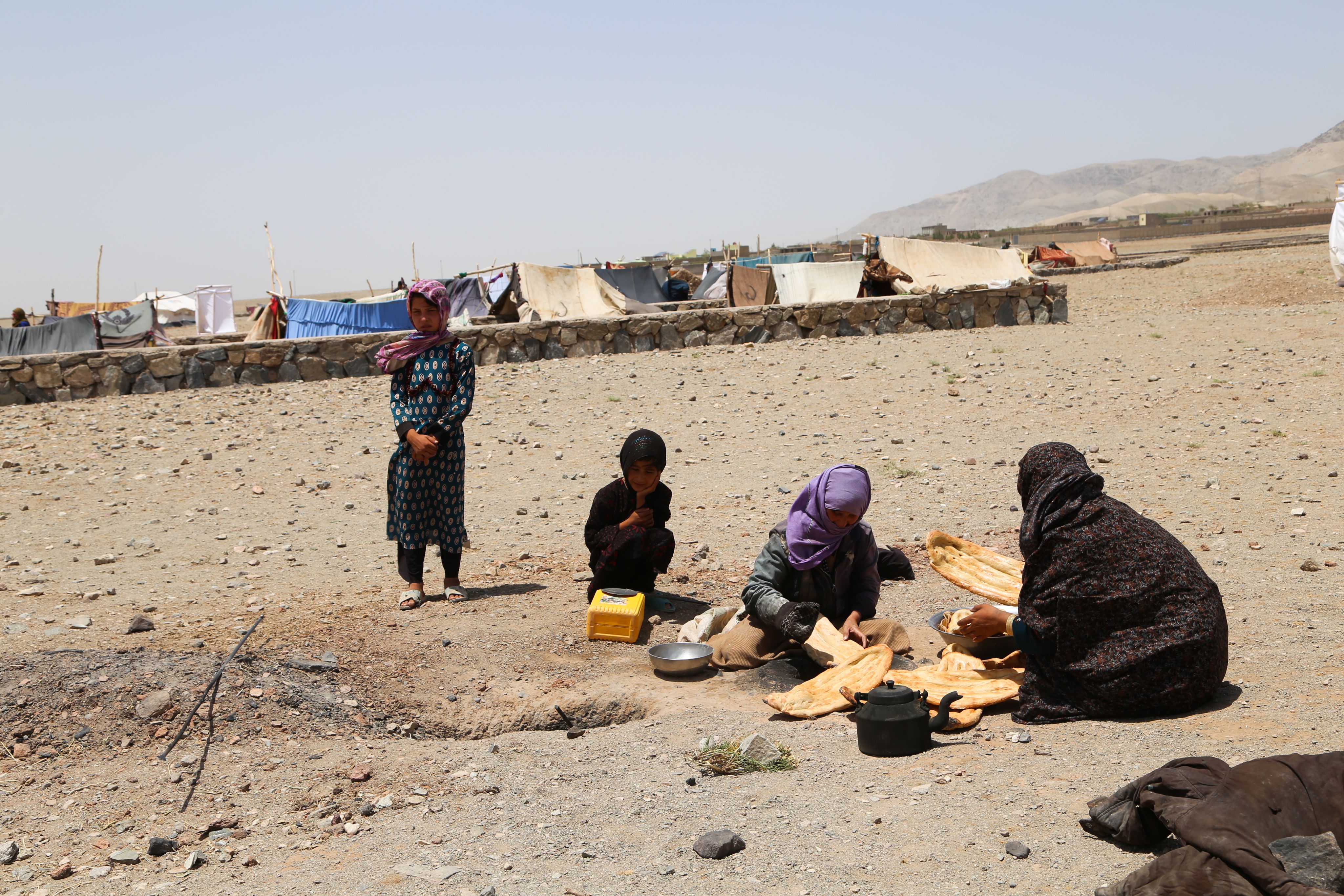
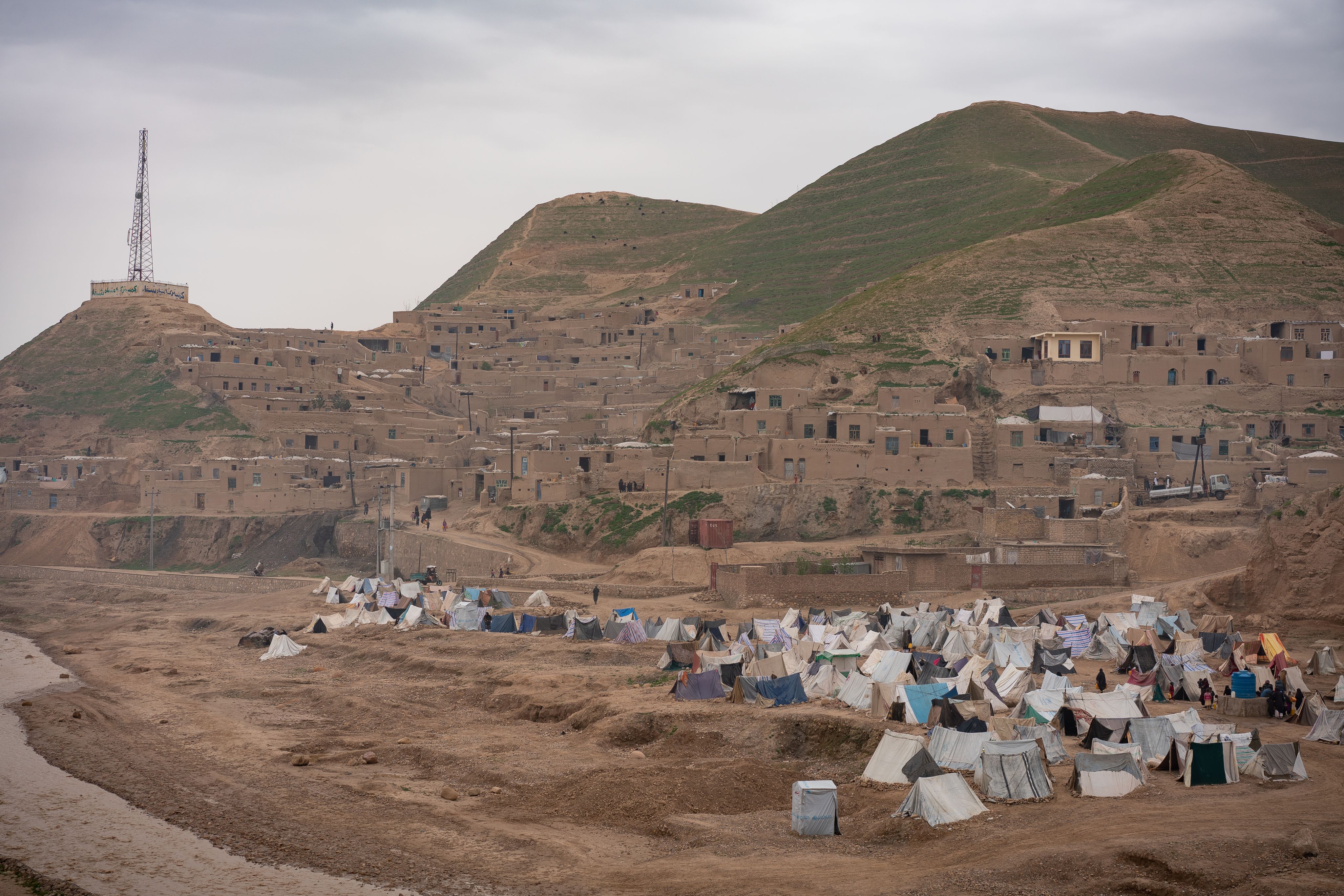


How did Jamila get here?
Decades of conflict and insecurity have destroyed families’ livelihoods. Every time they rebuild, another catastrophe knocks them down. 74% of families in Afghanistan experienced flooding or other kinds of natural disasters in the last year.
Drought drove Jamila’s family out of their rural home, to the city.
Rain stopped falling. Wells ran dry or turned salty. Rivers dried up. They had to leave behind their farm and everything they knew because there wasn’t any water.
Things aren’t much better where they live now. Water systems in the city are broken down – unreliable at best. And water pipes don’t run to the settlement where Jamila lives.
No one here has clean water to drink.
What is Jamila’s greatest fear?
HUNGER
13,700 children have died of hunger in Afghanistan since January 2022.
6 out of 10 children have stunted development due to hunger – impacting their bodies, their brains, and their immune systems for life.
“For several days now we haven’t had any flour to bake bread. I managed to collect these carrots because the children were crying and asking for food.” – Jamila’s father Zaki
Jamila is eating carrots her father found in the trash. It’s enough to stop the pain in her stomach, for now. But it’s not enough to save her from hunger.
Jamila doesn’t know — this is the last time she’ll eat with her family.
Today Jamila’s parents couldn’t fight off hunger anymore. They went looking for a solution.
There are always strangers lurking around the camp, waiting to pick up a child for cheap. Everyone knows where to find them.
Today was their day.
It was a quick deal. No paperwork. No numbers exchanged. Just - Here’s where we live. Come and get her.
Today Jamila’s parents sacrificed her to hunger. It means starvation will pass them by for a few months, at least. Maybe longer. They’ll survive, for now.
They try not to think what will happen to Jamila.
“We are starving. All of us. We survive by picking food from the garbage. That’s why it’s better to sell one of my daughters so that my other four children can survive.” – Jamila’s mother Massouma
The strangers will come for Jamila soon. They’ll give her father $600 and take Jamila away. She’s too young to fear her fate. A fate worse than hunger.
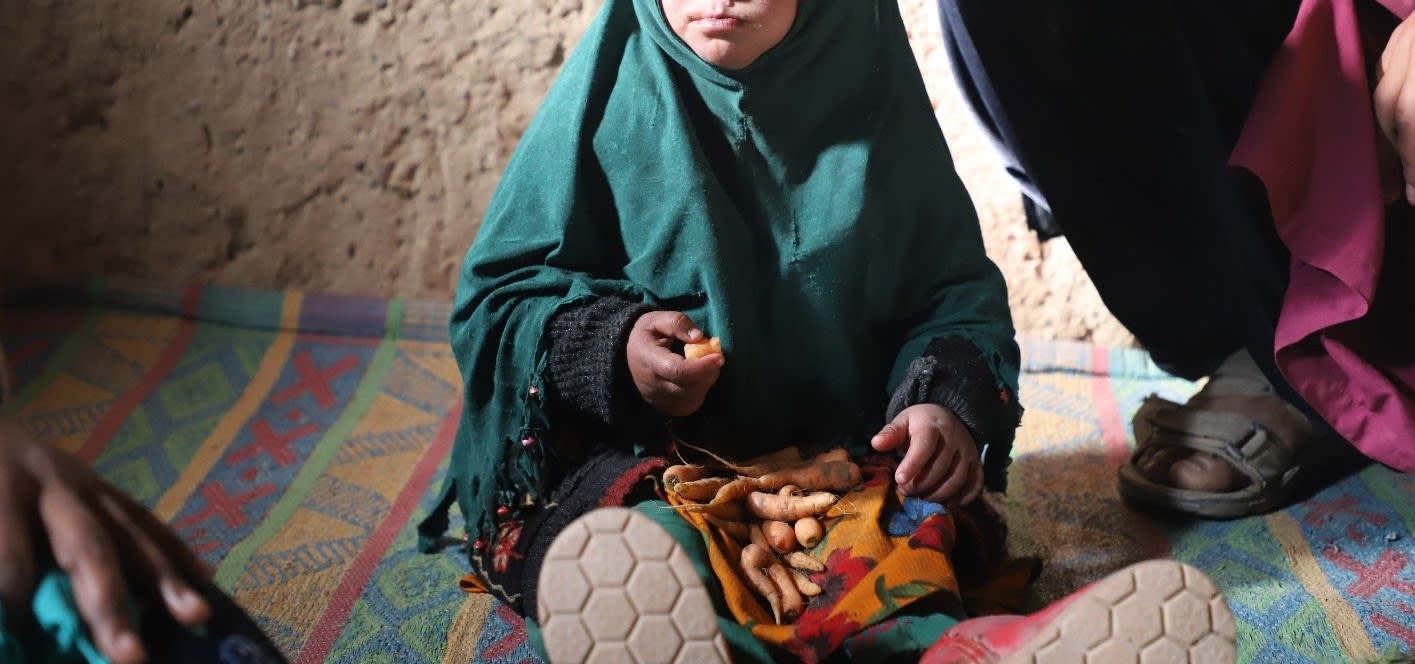
Where will Jamila go from here?
Jamila is a young girl in Afghanistan — one of the hardest places to be a girl. A migrant child, youngest of five girls, whose own parents sold her for food.
No one knows where Jamila is headed, except the people who bought her.
But we know what happens to girls like her in Afghanistan.

Child labour
25% age 5 to 14 have to work instead of going to school.
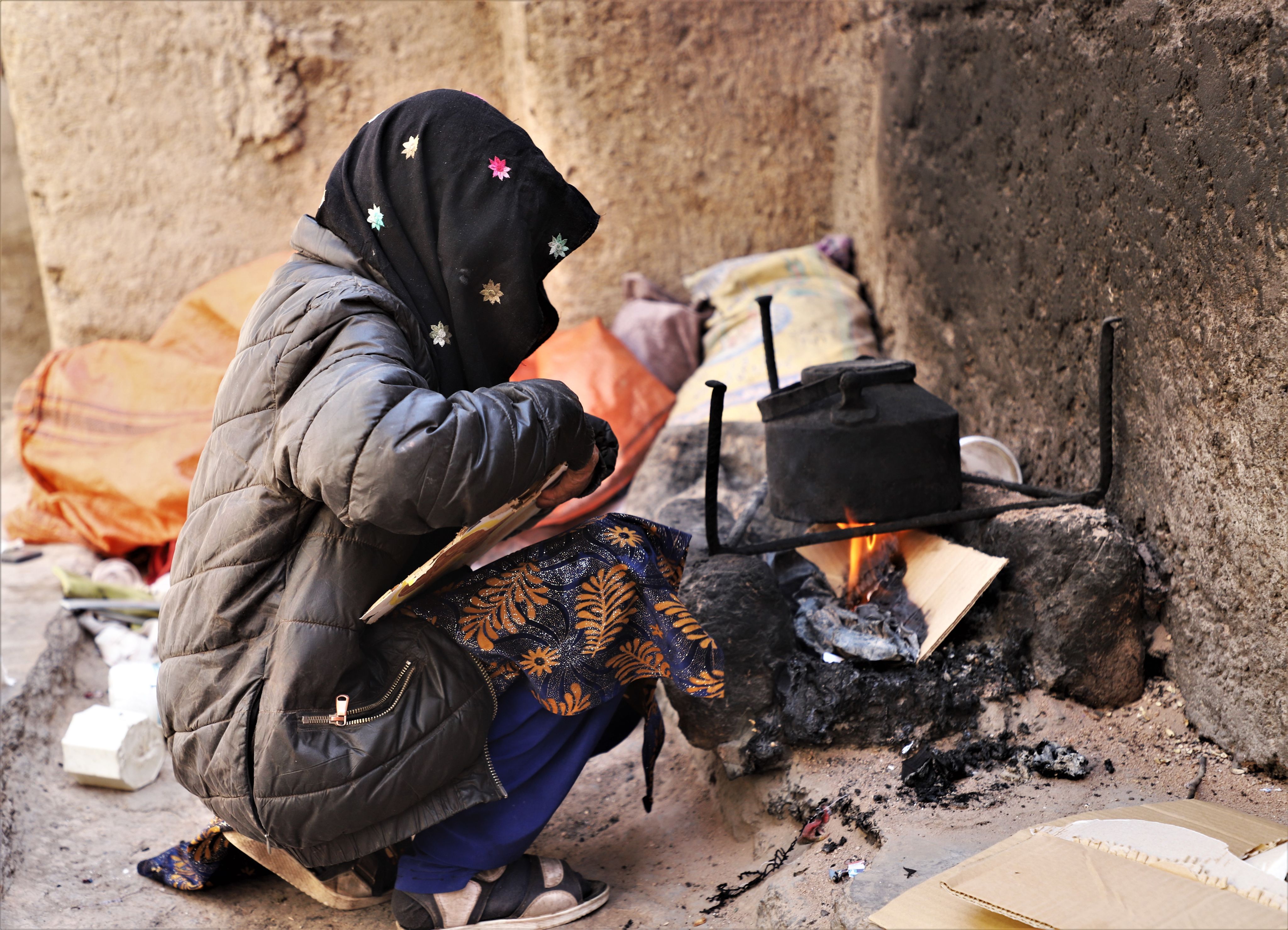
Child marriage
30% are married off in exchange for a bride price.
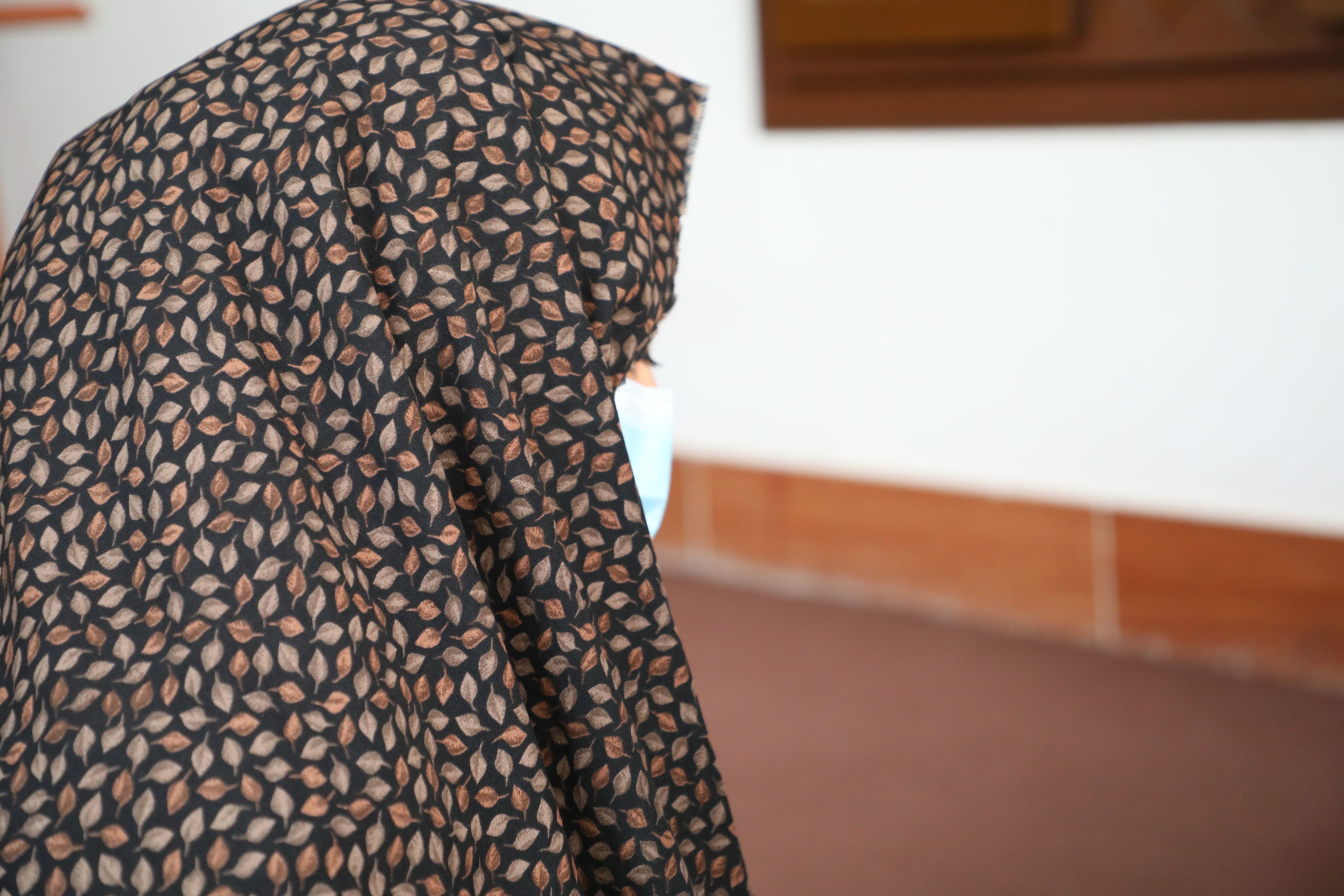
Violence & conflict
75% experience violence at home. Children continue to be recruited by armed groups, including being used as human shields or to transport explosive devices.

Illiteracy
Only 12% of girls can read. It’s illegal for them to attend school past grade 6.
Children like Jamila are being pushed deeper into poverty and further out of sight, by the compounding effects of conflict, climate change, urban fragility, social exclusion, and inequality.
Children like Jamila are being pushed deeper into poverty and further out of sight, by the compounding effects of conflict, climate change, urban fragility, social exclusion, and inequality.
